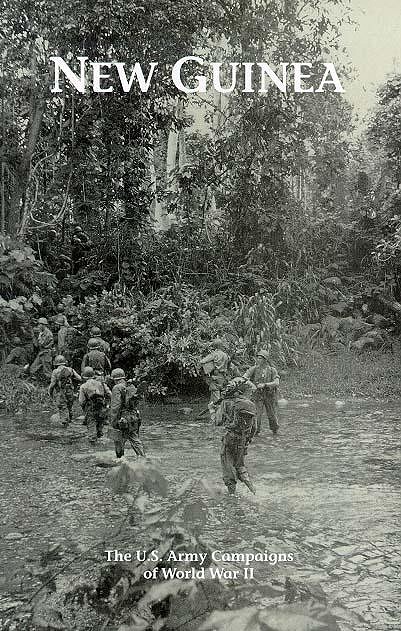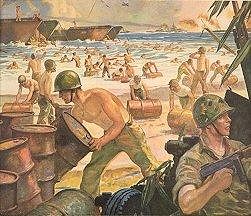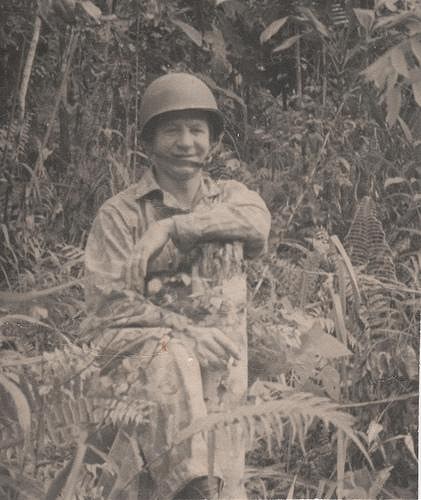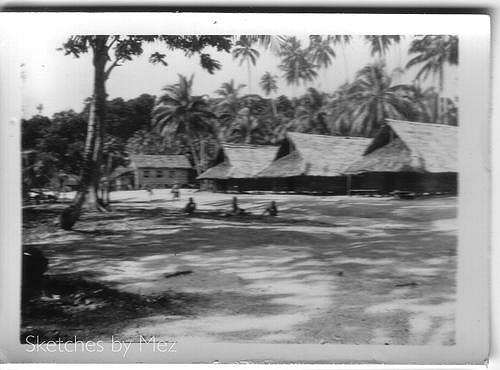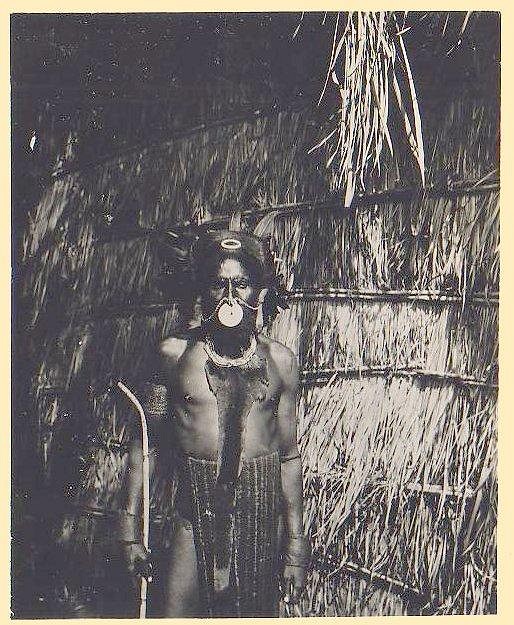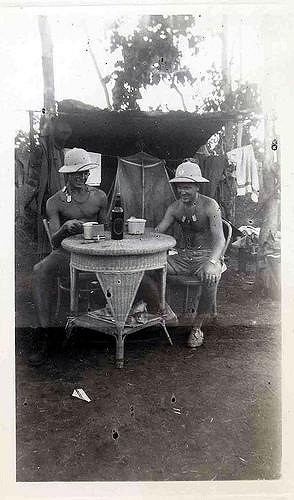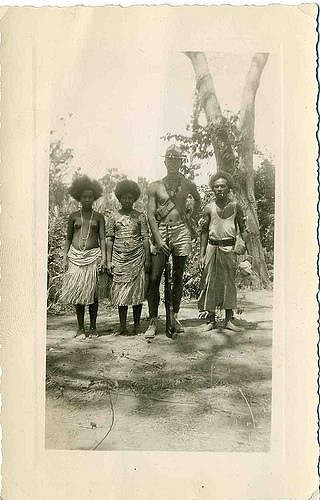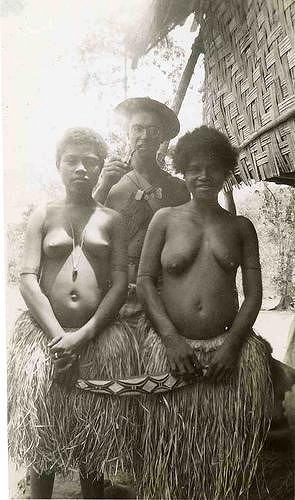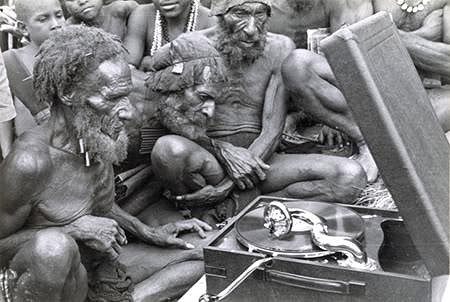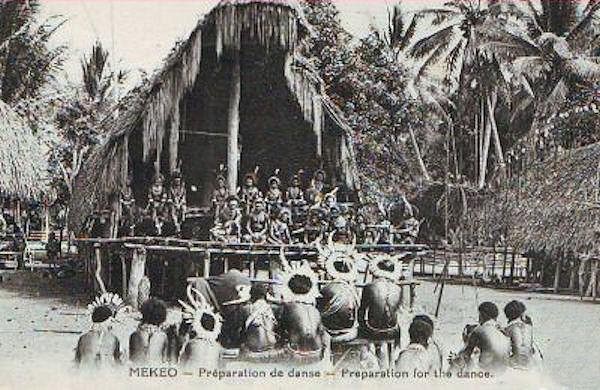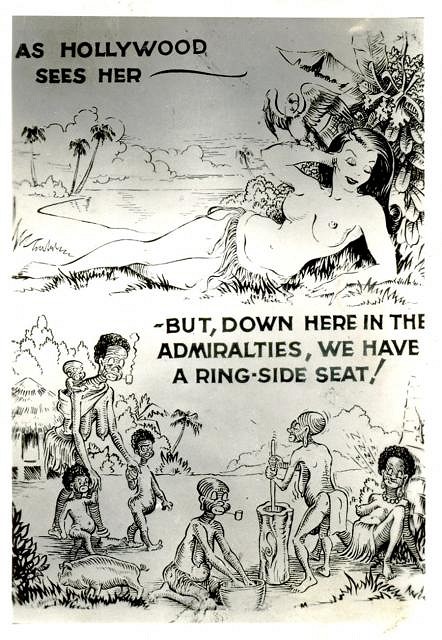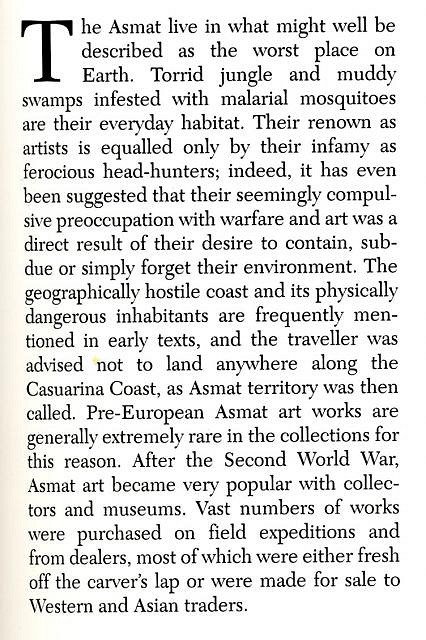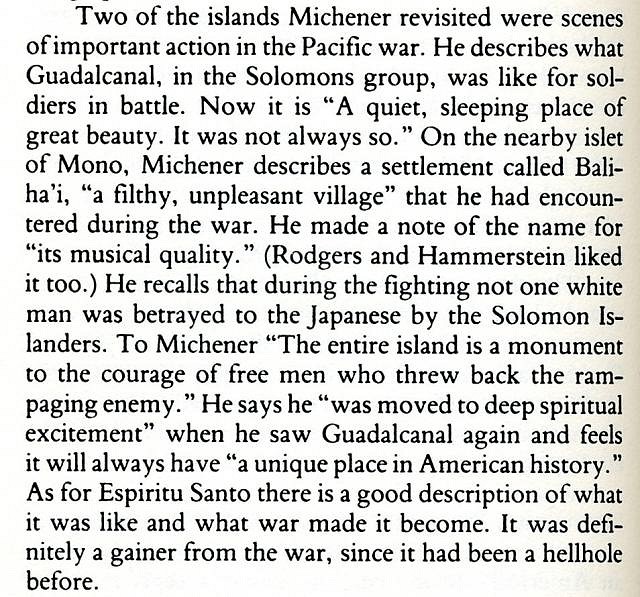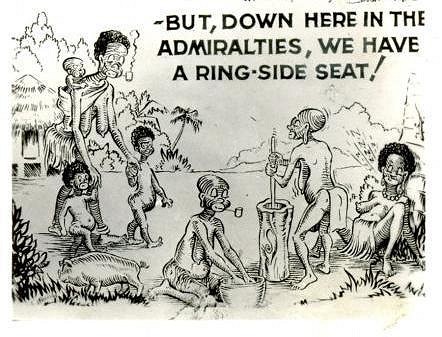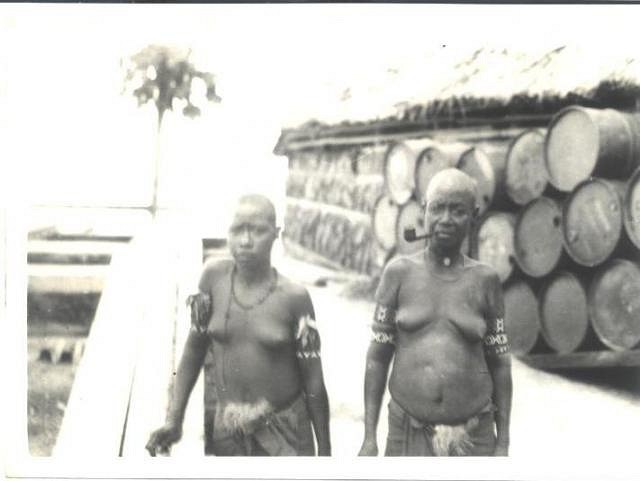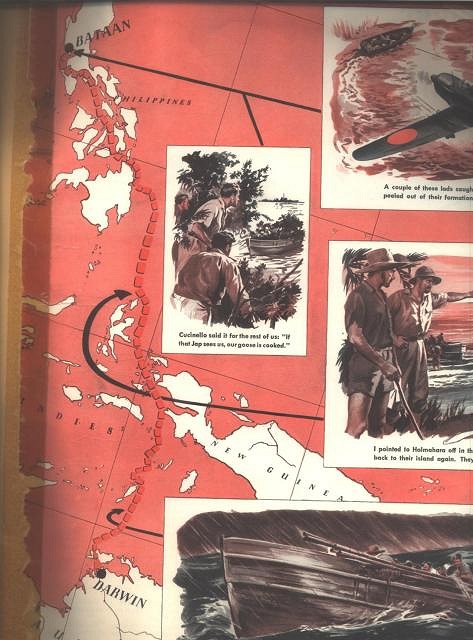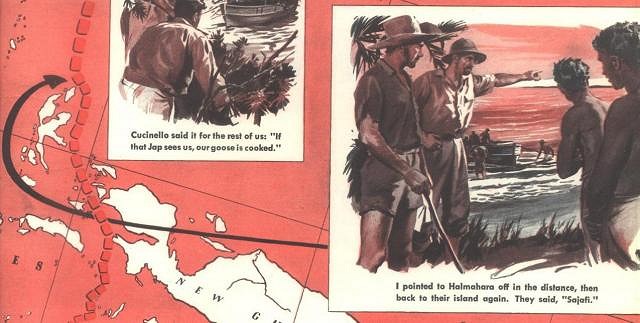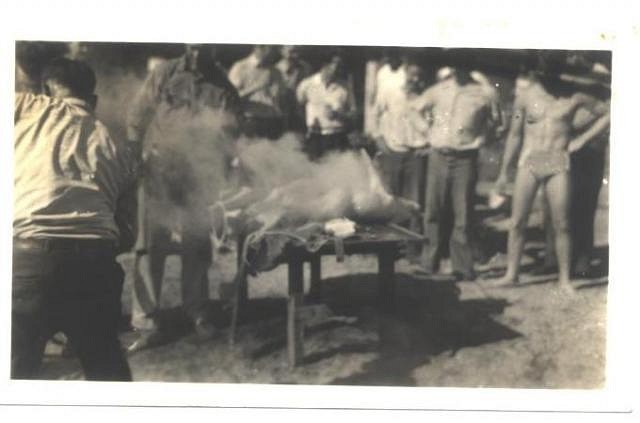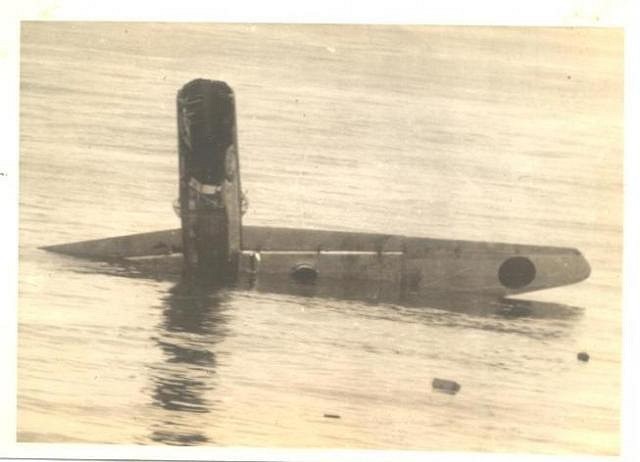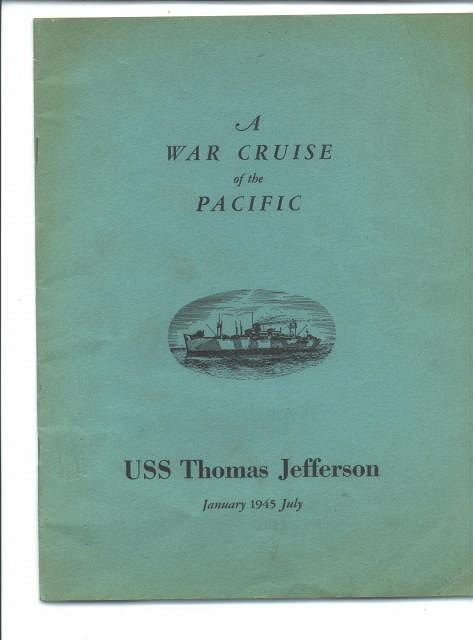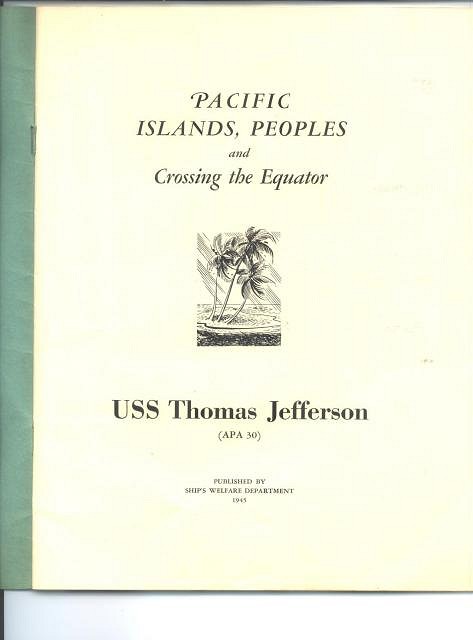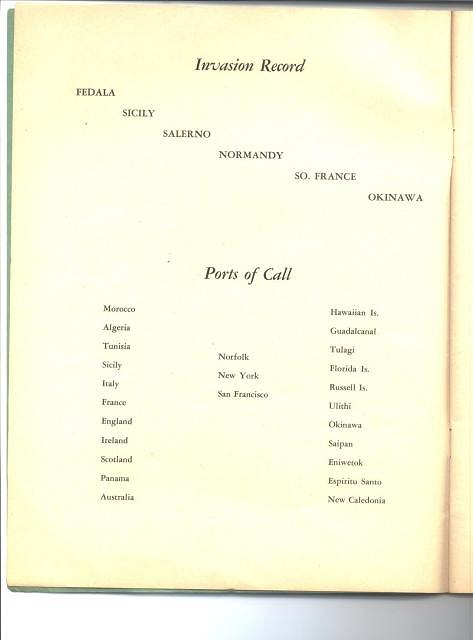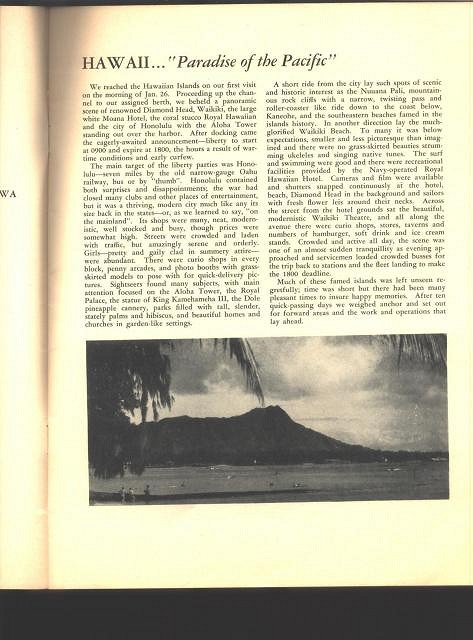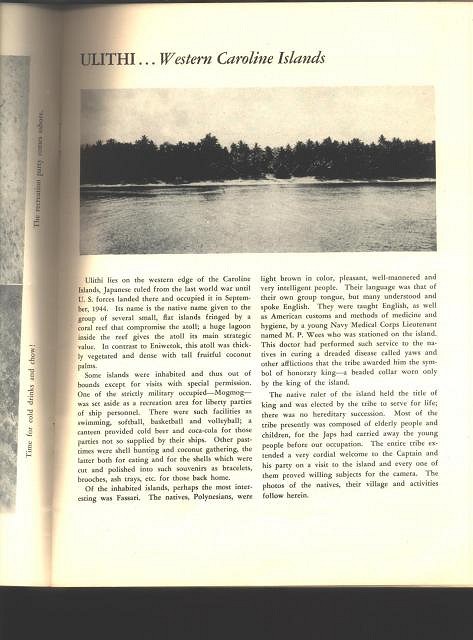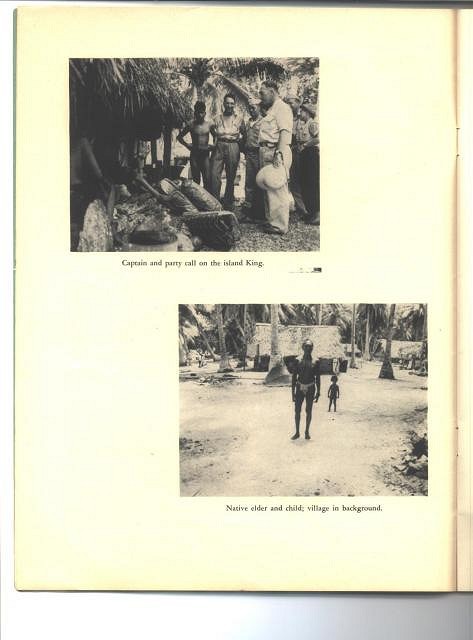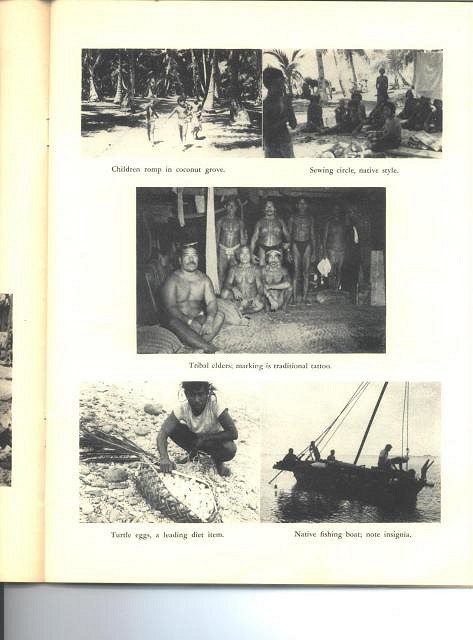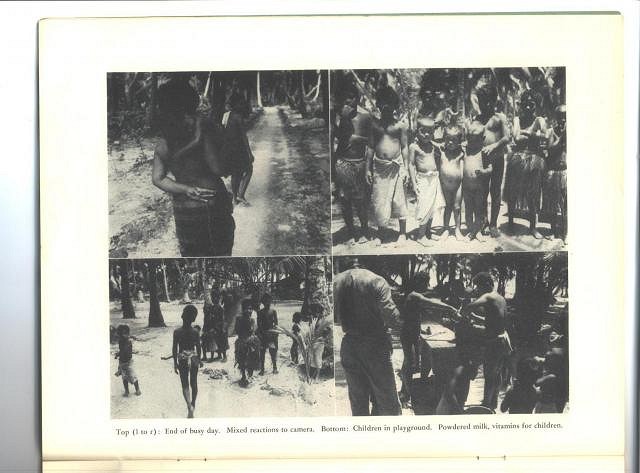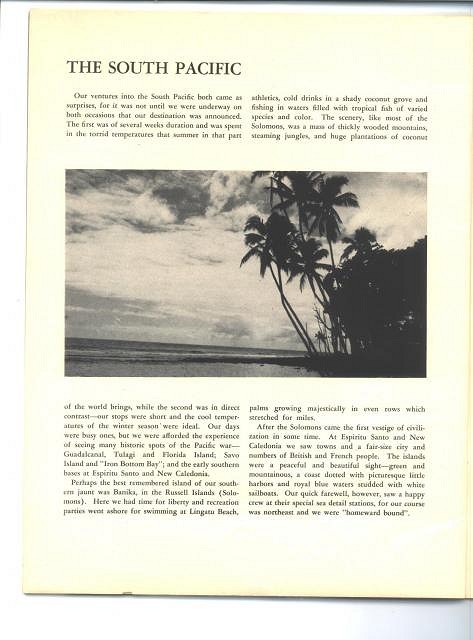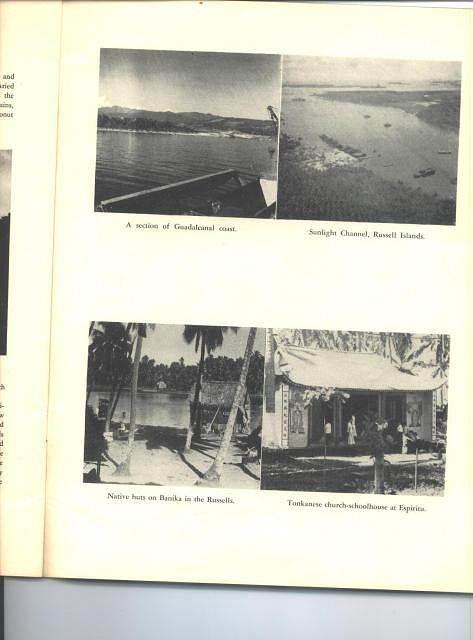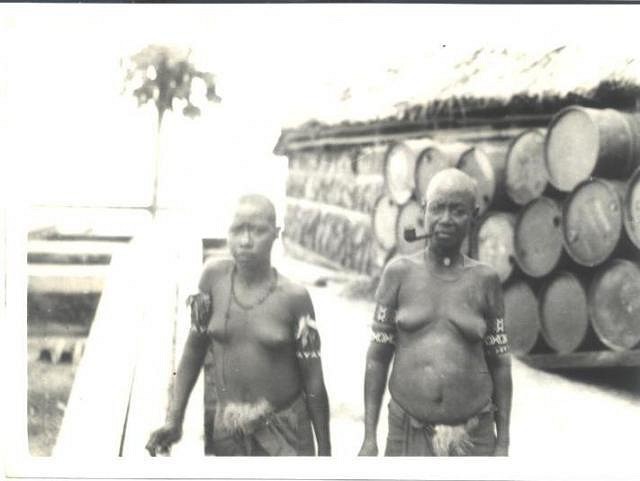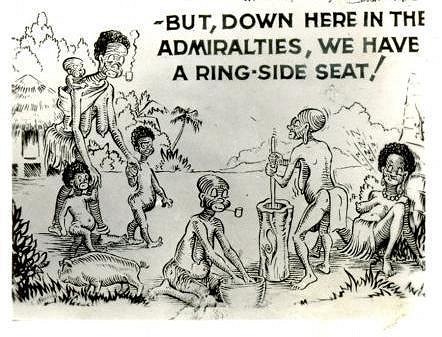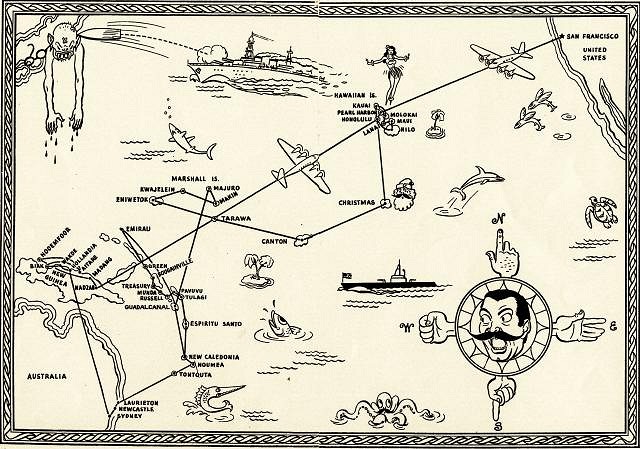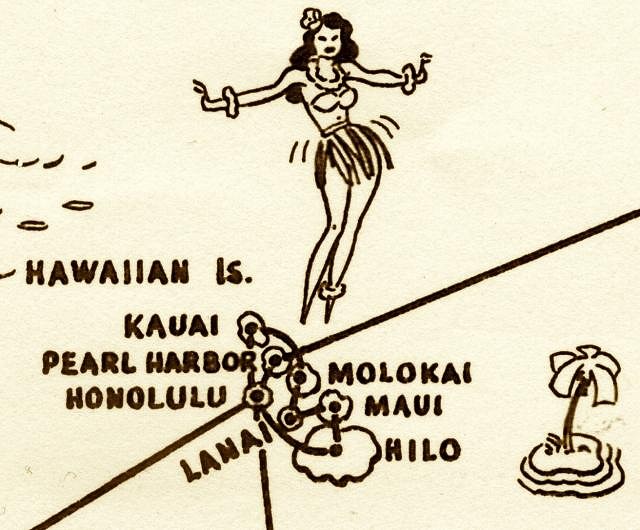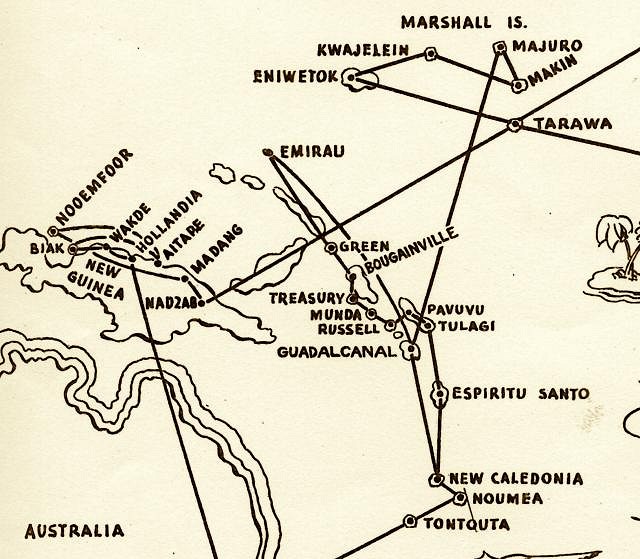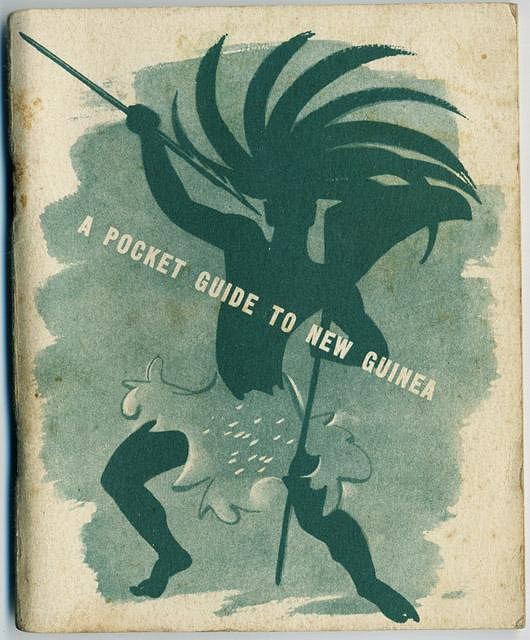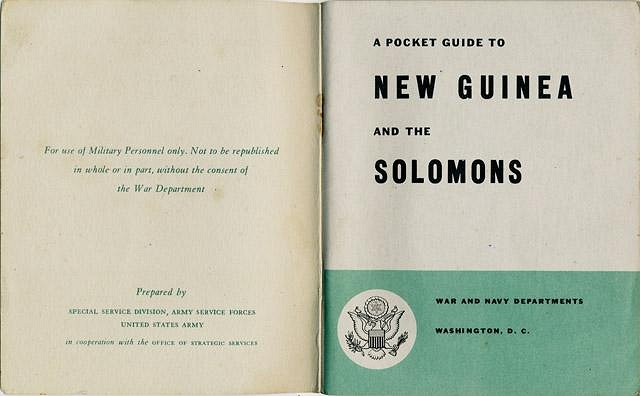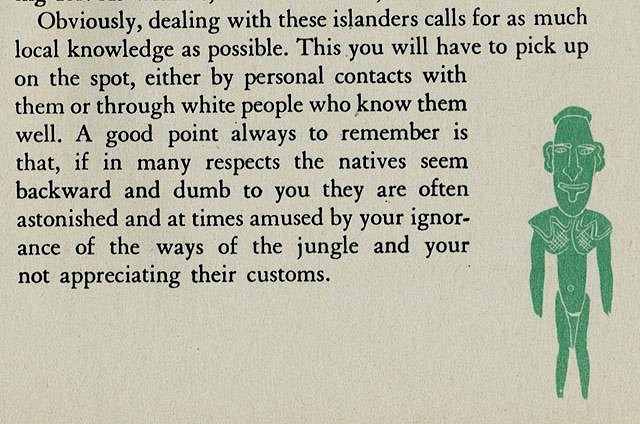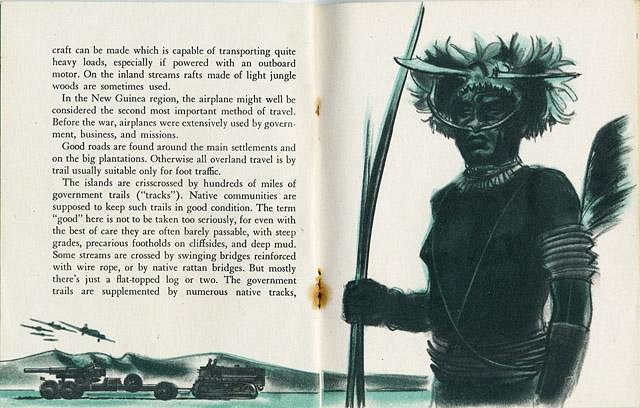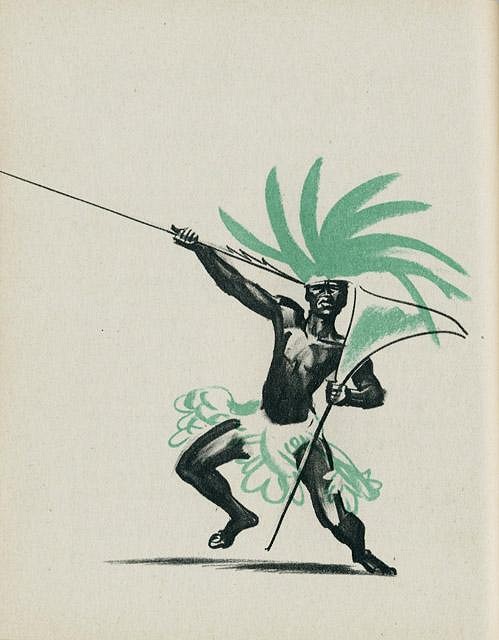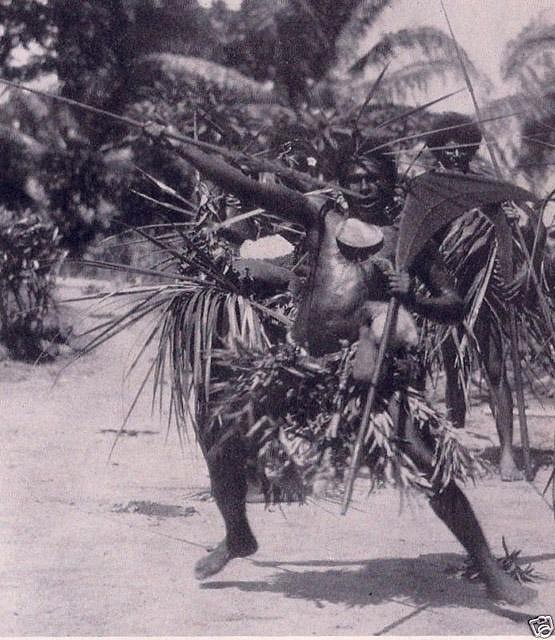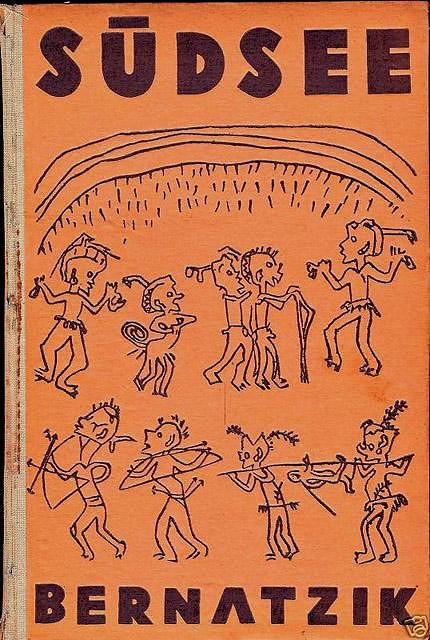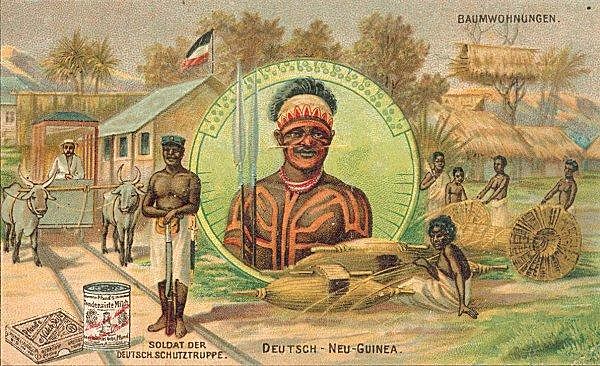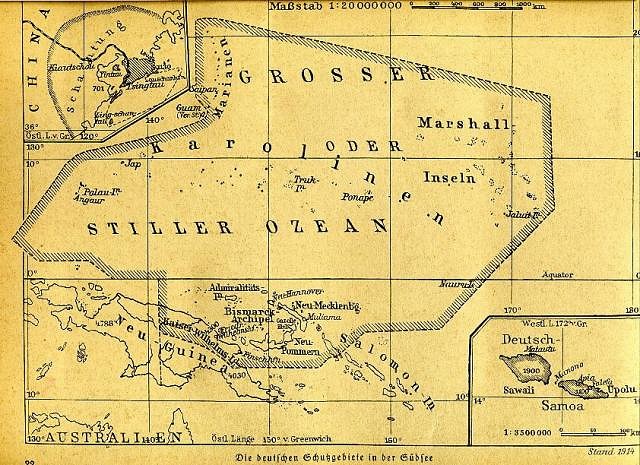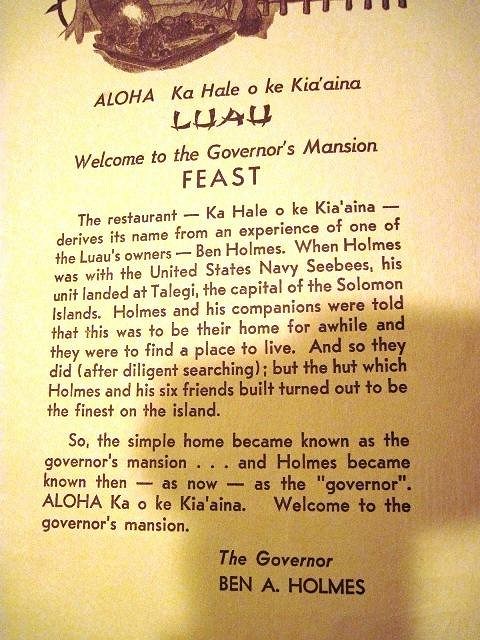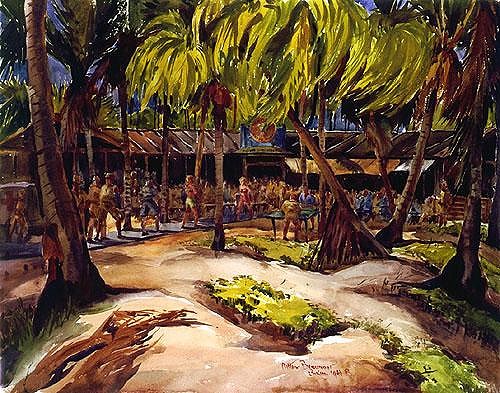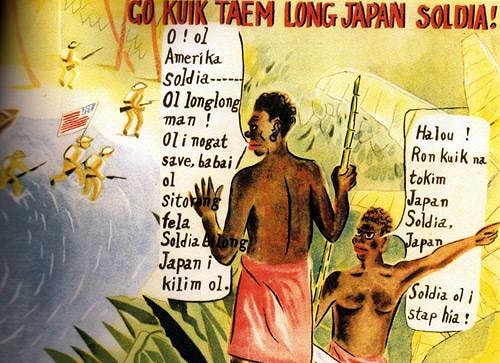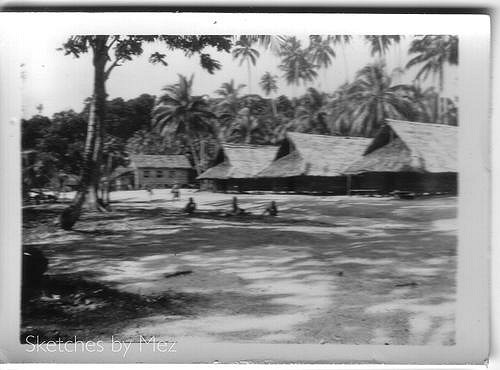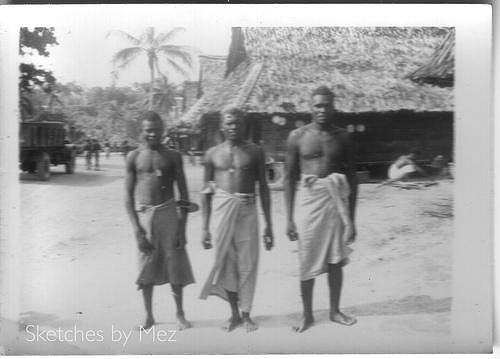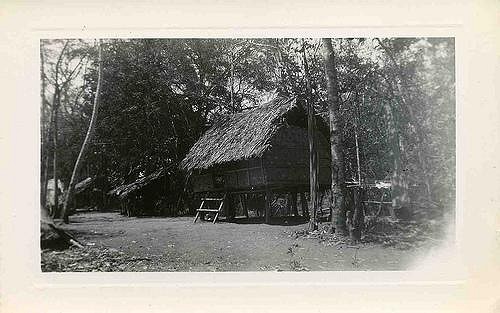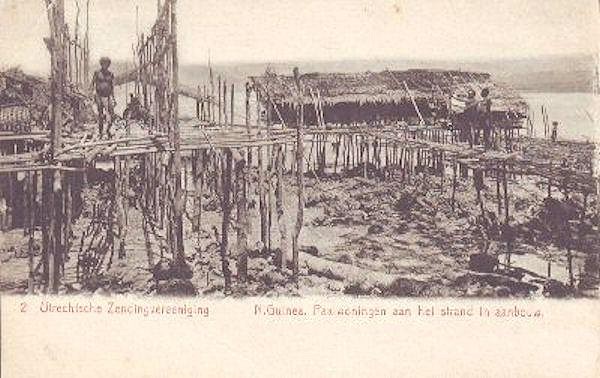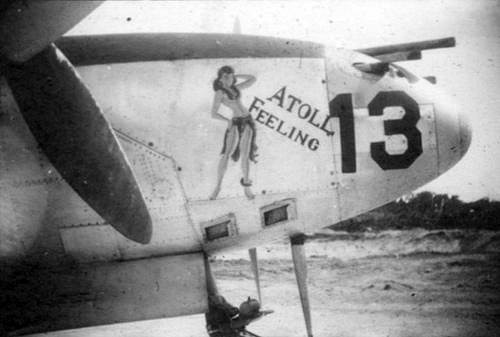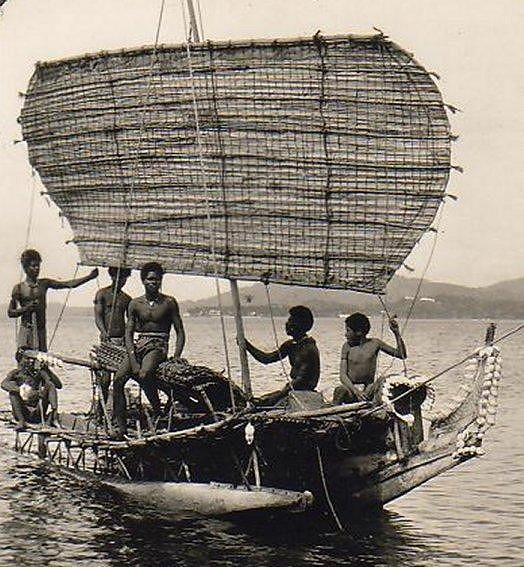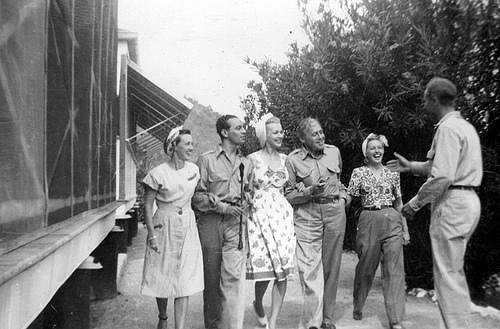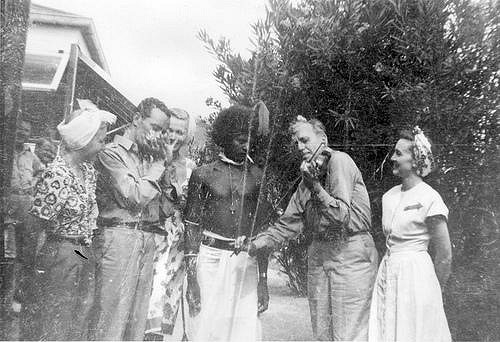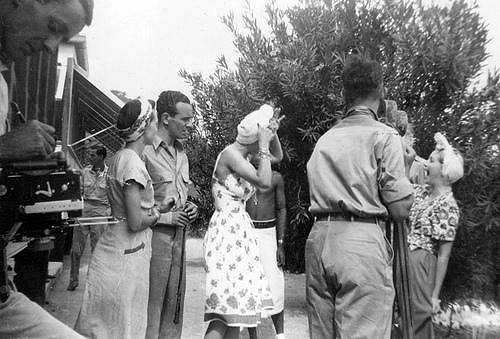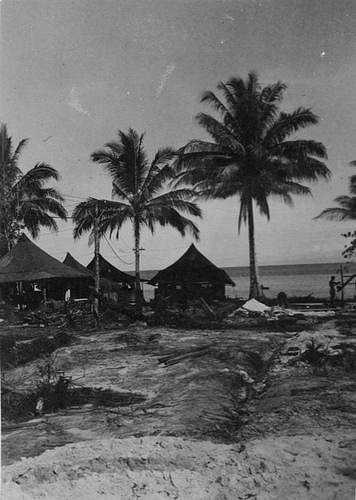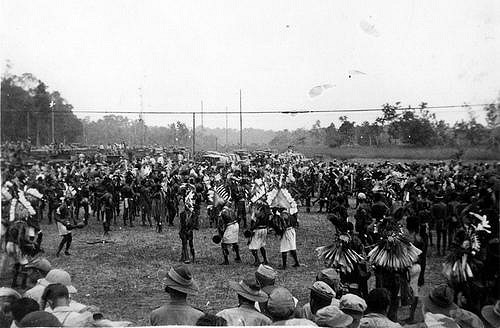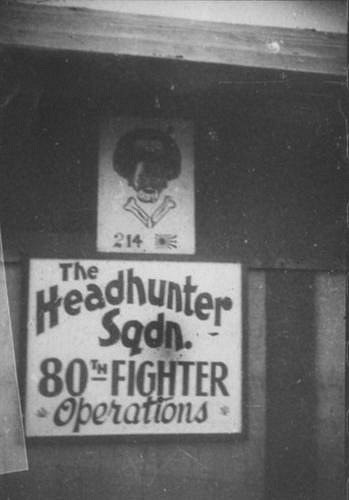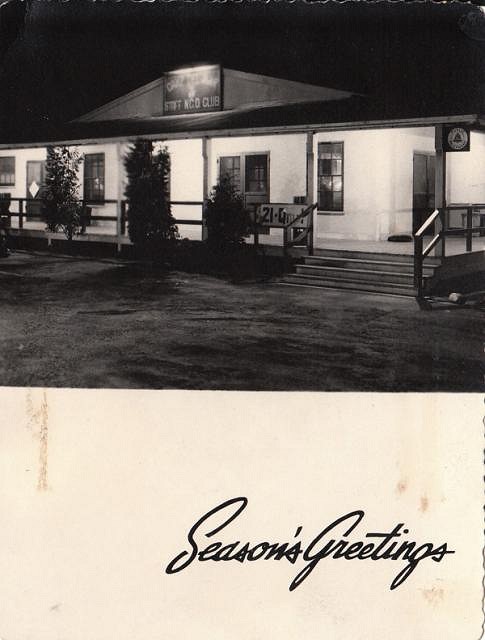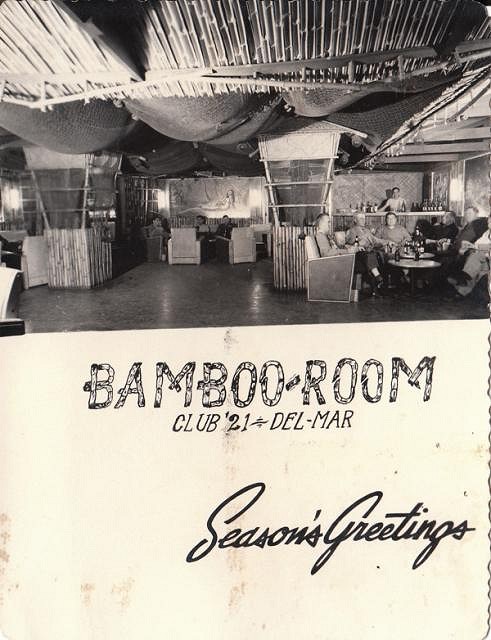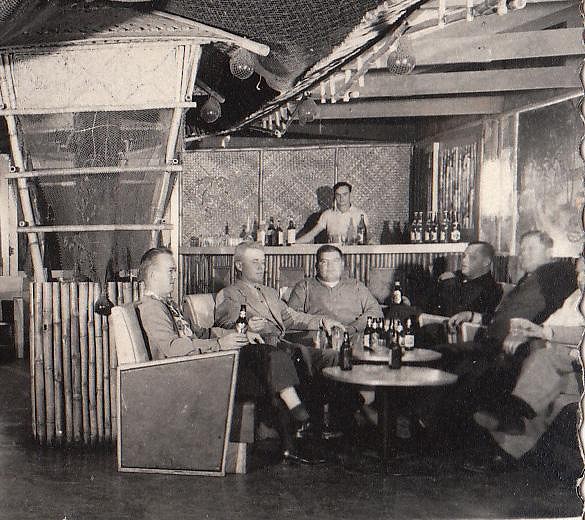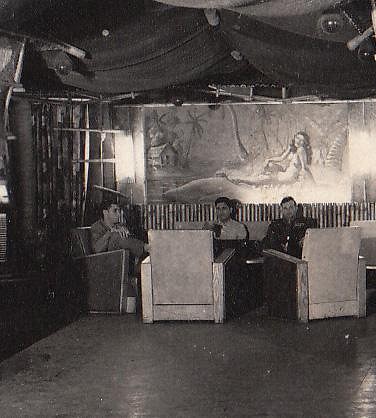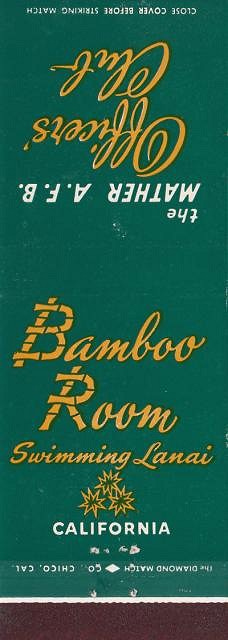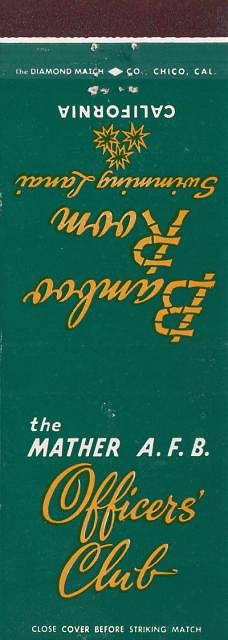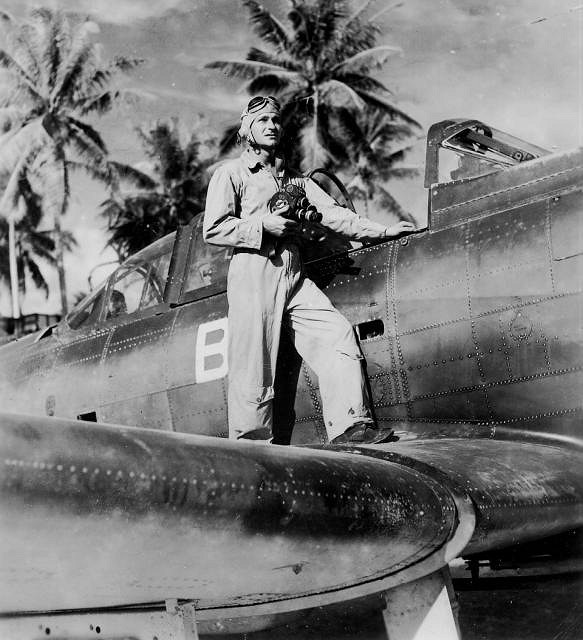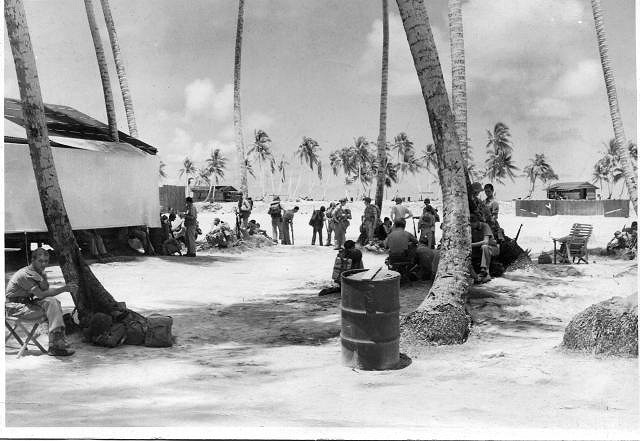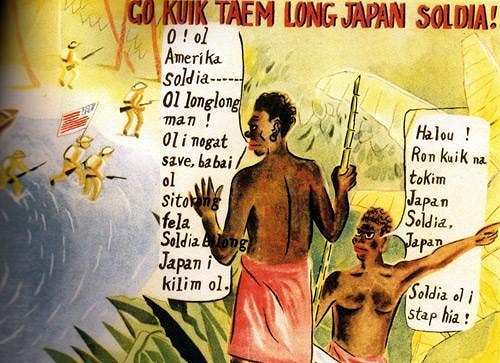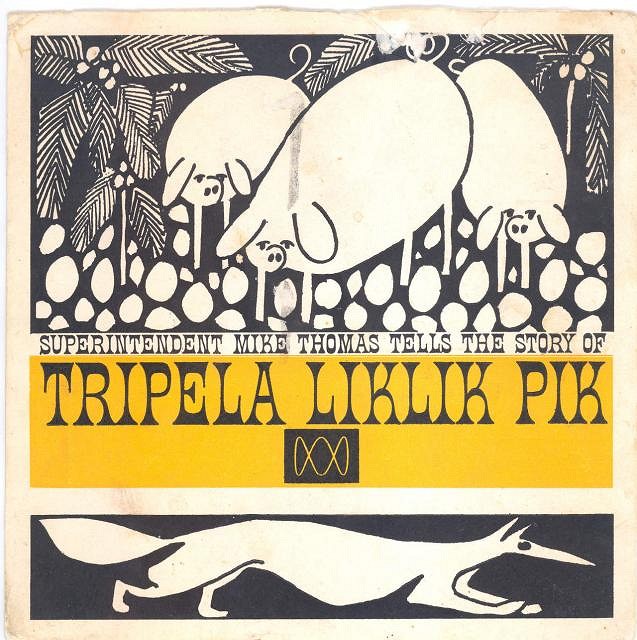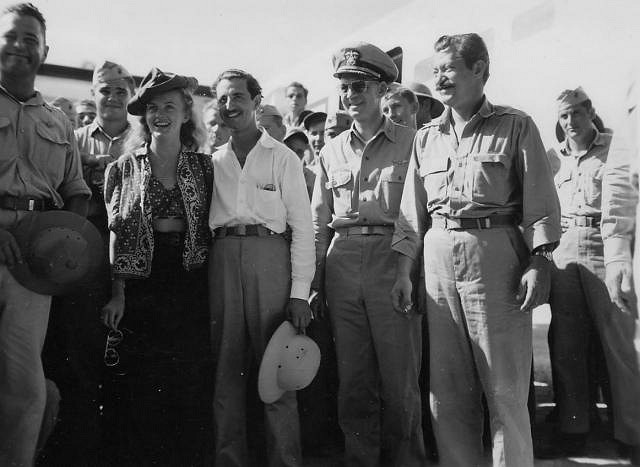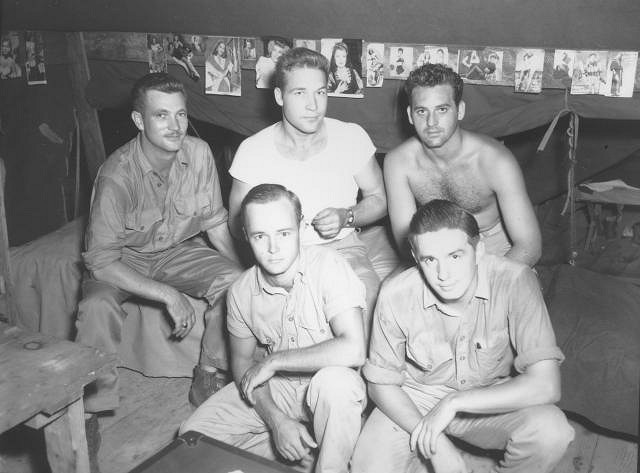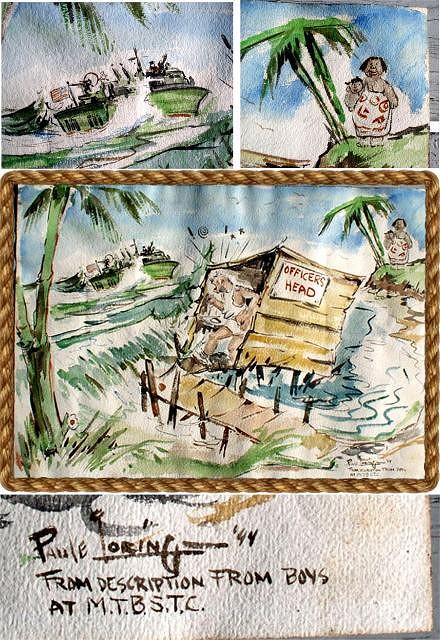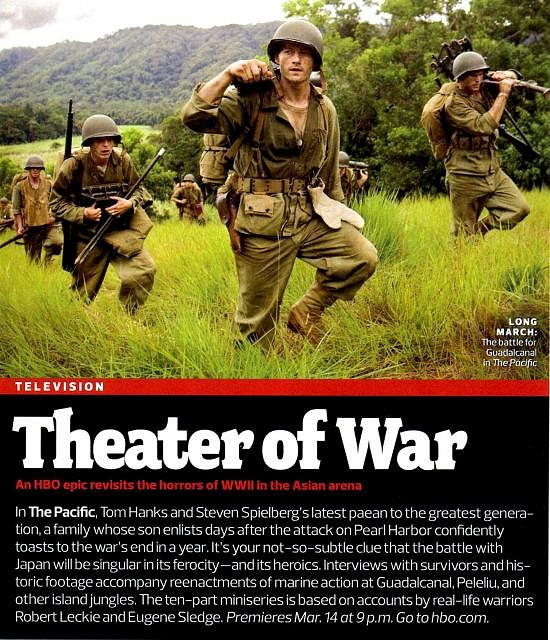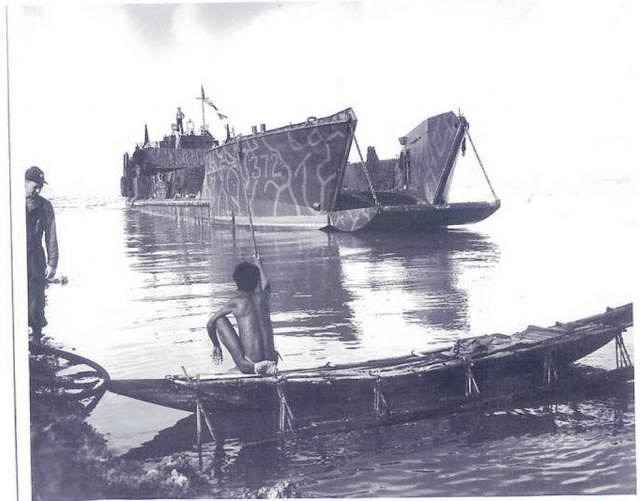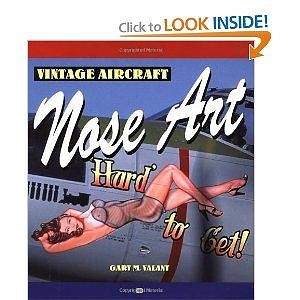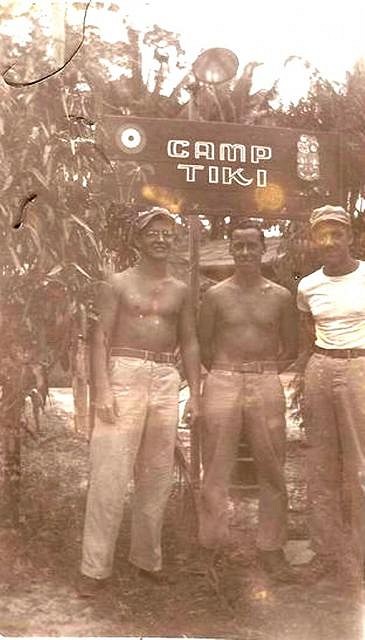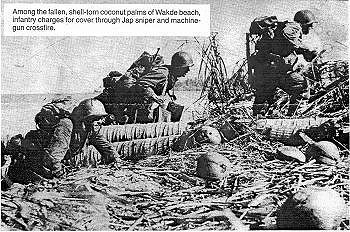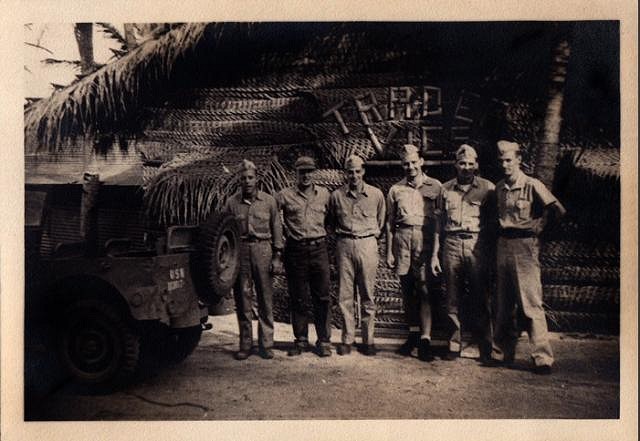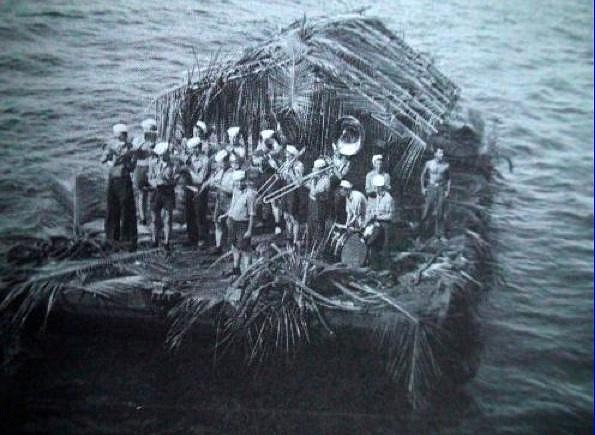Pages: 1 38 replies
|
B

Babalu
Posted
posted
on
Sun, Feb 14, 2010 9:43 AM
Ok, one more thread if you all don't mind....this one has been picking at my brain for some time now... It's been well established that the presence of our troops in the South Pacific had a huge impact on "Tiki" here in the United States. Of course we had a presence in Hawaii prior to WWII, but I can't help but think that the battles with the Japanese in New Guinea that began in 1941 must have been one of the first huge influences on the way we began to think about "Tiki" here in the States... Imagine: Thousands and thousands of troops putting to shore in NG to fight...most of our boys (fresh off the farms) had never been anywhere in their lives...They are met with Paradise, yes, but also Hell....Thick jungle that can hardly be cut through...grasses that cut skin, heavy machinery at a virtual stand still - unable to move, unknown jungle diseases killing friends right and left, heavy daily down pours, trekking through knee deep mud 'everyday' carrying a 60lb pack on your back, guys huddling around fires at night, not to keep warm, but to try and keep their socks dry...all this before they even went into the extreme hell of battle. It must have just been something else!...oh, and the drums...the drums, penatrating through the thick steamy haze of the night...that same sound, that same beat, over and over again...damn the drums!
[ Edited by: Babalu 2010-02-16 06:49 ] |
|
M
MadDogMike
Posted
posted
on
Sun, Feb 14, 2010 11:21 AM
Our political views of the world during WWII must have influenced our tiki tastes. Japan was known as an aggressor in the South Pacific, attacking the small island nations and committing real or alleged atrocities. Since we were there to defend these people (as well as to protect our interests), that made us sympathetic to their cultures and receptive to their artifacts. A beautiful japanese kimono, on the other hand, would have been badly out of place in a tiki bar unless it could be considered a war trophy. |
|
B

Babalu
Posted
posted
on
Mon, Feb 15, 2010 12:24 PM
|
|
B

Babalu
Posted
posted
on
Mon, Feb 15, 2010 2:04 PM
Ya'know Joe, If we ever get outta this place, we should open a bar....
|
|
B
bigbrotiki
Posted
posted
on
Mon, Feb 15, 2010 3:39 PM
I believe the fact that Americans were seen as the rescuers from the evil Axis powers, and thus treated as heroes and friends, created a very positive memory in the G.I.s' minds of their wartime experience with other cultures. Also, war time experiences are often the strongest ever made by men, with their intensity remaining unmatched in civil life. But although I have featured two Tiki artists in my books who were stationed outside of paradisaical Polynesia, Barney West in the Marianas and William Westenhaver in the Admiralties, I think they were not necessarily typical, and I would like to caution your enthusiasm (which I am very fond of, Rick !) in assuming that Americans' war time experiences in MELA-nesia had that much influence on shaping Tiki style. Here are my two reasons: A.) The average G.I. did not have the artistic interest and eye to appreciate the artifacts. The influence of PNG art on Tiki style hails mostly from the primitive art appreciation by museums and art dealers that I describe in Tiki Modern. If the G.I.s had had the time (and mind) to experience the native culture at all, it was more in meeting the people themselves, and maybe dances and customs, I believe. Don't forget that your interest comes from an artistic sensibility not shared by the the average Joe. B.) Melanesia is not, and never was, the "Paradise on Earth" that Polynesia has been since it discovery. Hawaii with its Wahines was a very different ball game. The attractiveness jump from the exotic Eurasian look to the much less Caucasian Melanesians could not be expected of American mid-century men, as that telling B&W photo card I published in Tiki Modern so brutally relates:
And as you so aptly describe above, the ENVIRONMENT itself was not that "Beachcomber-in-a-hammock" island paradise one imagines of Hawaii and Tahiti, I quote this section from Anthony P. Meyer's "Oceanic Art" (which is in NO WAY to be taken as a negative comment on your stellar Asmat ART post, which I love !!!):
The story of the REAL Bali Hai perhaps best relates the impressions that many island locales actually made on G.I.s, and how they became romanticized by the media after the war. (The section below also speaks of what MATTERED to the fighting men back then, and I don't think native art was it):
Which is not to say that some guys might not have had the luck of finding little pockets of tropical bliss. But I believe the above description of "Hellhole" was generally more accurate for most of the places encountered by the men. AFTER the war, with the all-pervading influence of South Pacific the musical and movie, it was more remembered thru rose-colored glasses. But I don't think folks entered A-frame supper clubs with Asmat shields as decor on their walls because of what they experienced in the Melanesian war theater. |
|
B

Babalu
Posted
posted
on
Tue, Feb 16, 2010 6:45 AM
Thank you for the time and detail you put into your post Big Bro...It really is very appreciated. Perhaps I should have put a "?" at the end of the title words to this thread when I posted it, for this whole thread was meant to be more of a question rather than a point which I was trying to get across. I just plain didn't know if there was any kind of a Golden Age connection or not, and was looking for feedback. One can only get so much information from books, and web Sites that show case the art of New Guinea When I first started looking into the war campaign archives of WWII - PNG for additional art imagery...my mind started ticking. There is some really wonderful imagery and documentation of accounts from back then online. I couldn't help but think that the media that must have been dominating the radio air waves in 1941 -43 with some amazing stories of the hardships, head hunters, and possibly the raw beauty of the area that our boys were fighting in...what type of impact did the media have on the USA population, again, I just wasn't sure. And yes, very true, I have been looking at my recent research of New Guinea with an artist's sensibility, and also perhaps, with the same rose colored classes on that you mention in your post above on Rodgers and Hammerstein. For who can really know the hell of battle unless you have been in one...I have not. At any rate, perhaps this thread could be one where people could come and post some of these old WWII island photos? There really is some cool old stuff out there in these old archives that might help folks such as I down the road. Enjoy the day Big Bro! :) |
|
B
bigbrotiki
Posted
posted
on
Tue, Feb 16, 2010 11:54 AM
Thank you, Babalu! :) I too find those photos of and by WWII soldiers fascinating. Did these all come from the web? God thank the internet for flushing all this material (which otherwise might have never seen the light of day) out of dusty albums and attics! To stay on topic with Babalu's intention to make this thread a repository for WWII photos and material, I started another one (which this one inspired me to): When and where did Melanesian art enter Polynesian pop?: http://www.tikicentral.com/viewtopic.php?topic=35535&forum=1&start=last&0 [ Edited by: bigbrotiki 2010-02-16 16:40 ] |
|
BPB
Bay Park Buzzy
Posted
posted
on
Tue, Feb 16, 2010 5:18 PM
That image reminds me of something from the family archives... I was looking through my Grandfather's old navy stuff and came across this photo: He went close to PNG on his escape route from the Phillipines to Australia in 1941. Here's a picture from The Saturday Evening Post article of the islands they went by: A panel detail shows contact with the natives just northwest of PNG: Another one of his original photos of a pig cookout: There were a bunch of burning and sinking boat pictures, a bunch of fishing photos, and a bunch of palm tree filled islands. Here's one of a downed Jap plane: BigBro: here are some scans from a Navy published book about the USS TJ's travels during the war. I only included the relavant pages. there were a lot of life on the boat pictures and equator crossing shananigans otherwise. It's a nice first hand document of the era that we're discussing here. Go Navy! Cover Title page Ports of call: It has little yearbook like memory entries for he places they went. Here's Hawaii: here's a nice section of photos on Ulithi: It seems my Grandparents, all WWII Pacifis theater Navy vets, seemed to gravitate towards the Asian influenced art stuff, rather than the Polynesian decor stuff after the war. Buzzy Out! |
|
B
bigbrotiki
Posted
posted
on
Tue, Feb 16, 2010 7:01 PM
Great material, Buzzman! And I believe me that your grand pappy himself drew that cartoon!
What a list of ports of call! I think this might be a good thread to post Jerry Colona's Bob Hope USO Tour map from the BOT again:
...and zoom into it a little: ...it is amazing to see in how many places in Micronesia and Melanesia Americans were stationed at!: Buzzy, you of all people should be able to tell us: Do you remember your grandparents telling any South Sea tales from their wartime, or did they or your parents have tropical home bars? Actually, you and your parents don't count, the second and third generations were already removed from the direct war experience, and subject to the romanticizing and mixing in of South Sea cliches. :) [ Edited by: bigbrotiki 2010-02-16 19:17 ] |
|
T
ThreeTikis
Posted
posted
on
Tue, Feb 16, 2010 7:10 PM
This is really a great thread. Thanks to all that post (even BigBro). Would love to see more. |
|
STCB

Sabu The Coconut Boy
Posted
posted
on
Tue, Feb 16, 2010 9:17 PM
One of my favorite items is the small pocket guide that the Army and Navy gave to its troops going to New Guinea in WWII:
It tries to put a positive spin on the island adventure the soldier is about to partake in, but the chapters on hook worms, tropical ulcers, mosquitos and fungus are pretty grim: "Most unpleasant of all, perhaps, are the leeches which grab at you, or drop on you from leaves in the jungle. They will probably get in through to your skin no matter what you wear. If allowed to bloat up on your blood they will drop off. Get rid of them as soon as you can. But never tear them off, as a bad sore may result. A lighted cigarette, a cigarette lighter, a spit of tobacco juice, soapy water, gasoline, or a pinch of salt are used to make leeches let go. Don't scratch the spot afterwards, or it may become a sore. 'Tis said old residents miss all such vermin when they leave the islands" More advice: WHAT MAKES TROUBLE WITH THE NATIVES Best of all are the illustrations. Tiny drawings of PNG artifacts throughout:
and really nice watercolors (or are they pastels?):
The image above, which is also used in outline-form on the cover, was based on a picture from a 1934 book, "Südsee; ein Reisebuch", by German photographer Hugo Bernatzik, which I'm sure Bigbro will appreciate.
[ Edited by: Sabu The Coconut Boy 2010-02-17 00:36 ] |
|
B
bigbrotiki
Posted
posted
on
Tue, Feb 16, 2010 10:17 PM
There are a lot of German ethnology books on the region from before WWII, from the time when Micronesia and part of Melanesia where German colonies. Here's the areas that were "German" before the Krauts lost WWI and had to give them up:
Swanky just posted an interesting thread about a Florida restaurant: The little menu story fits into this thread: While it seemingly contradicts my opinion of doubting that war experiences in Melanesia directly inspired Tiki temples, I believe it's not as easy as related in the menu text above. What were those guys doing during the ten years between the end of war, and the blossoming of the Tiki craze? Nobody came home in 1945 and -BAM- opened a Tiki joint. I believe the Tiki craze happened first, for a variety of reasons ("South Pacific" being one), and then the veterans fit well into the concept. Remember, Don The Beachcomber and Trader Vic were fictional characters, and they inhabited a South Sea storybook-land composed of movie, music and novel cliches. The scripts for these stories made use of whatever fit into their concept, and molded it in, to reflect the public need for the dream of the South Sea island paradise. It is that fantasy quality that makes Poly pop an art form. (Those Germans could have never done it, they would have been too "correct". :) ) [ Edited by: bigbrotiki 2010-02-16 22:31 ] |
|
C
cheekytiki
Posted
posted
on
Wed, Feb 17, 2010 4:57 AM
It may be slightly off the topic as this was more Micronesia than Melanisia, but I'd love to one day revive somewhere the "Cross Spikes Club" which was the bar the Servicemen created on Bikini Atoll.
From Wikipedia The Cross Spikes Club was an improvised bar and hangout created by servicemen on Bikini Island between June and September 1946 during the preparation for Operation Crossroads. The "club" was little more than a small open air building that served alcohol to servicemen, and outdoor entertainment including a ping pong table.[14] The Cross Spikes Club has been described as "the only bright spot" in the Operation Crossroads experience. The club, like all military facilities on the island, was abandoned or dismantled following the completion of Operation Crossroads." |
|
A
artsnyder
Posted
posted
on
Wed, Feb 17, 2010 4:30 PM
This entire discussion is of interest to me and to others involved in the Tiki culture, of course--if for only the fact that Don, when he invented Tiki, used the 1930s version of popular fantasizing about the people and life of the "South Seas" as the fabric on which he painted the fantasy world of Tiki. |
|
B

Babalu
Posted
posted
on
Wed, Feb 17, 2010 5:36 PM
Like the cartoon above, this little online find has racial connotations, however unfortunate, that was pretty much the norm back then.... The rendering style on this is postcard (I think it's a postcard) are somewhat interesting though...
|
|
W
Wayfarer
Posted
posted
on
Fri, Feb 19, 2010 3:49 AM
Where is that postcard from? The language on it looks like a (and if it's from an actual language, I apologize in advance)bad rendering of Tagalog, though those natives, even as caricatures, don't look like any Filipinos I've known. |
|
B

Babalu
Posted
posted
on
Fri, Feb 19, 2010 10:14 AM
Wayfarer, That image was propaganda from the New Guinea Campaign 1941. The only thing that it really shows for sure is the racial attitude that we had as a population back then. I believe that the written text was one artist's way of showing how natives spoke...thankfully, we've come a long way.
Art, you certainly pegged me right for being a amateur historian...and honestly, I don't think one could group me in with being an anthropologist at all. I'm just an artist doing a little research for my own studio needs, and sharing some of my findings, as well as posing a few questions to my Ohana here on TC to help me down my path of discovery. I feel that this thread will in the end turn out to be helpful in someway to myself and others here. I also feel that it fits wonderfully within the context of this forum. The craft and architecture of New Guinea does have it's place within Polynesian Pop. The US troops that were stationed in New Guinea during 1941 through 1944 is in case some of the "first" real contact we had as a Nation with the Pacific Island chain "in the war effort", and it might, or might not have had some type of impact on Polynesian Pop. who knows? What I do know for sure is that questions asked in this, and all fields of endeavor is what keeps us all interested. Oh, and let's not forget rum...that probably helps to keep our interest alive as well :) This thread has already helped to branched out another thread which has the potential to be one of the most interesting threads here on TC in my opinion...go to Big Bro's thread - http://www.tikicentral.com/viewtopic.php?topic=35535&forum=1&12 Art, you may be able to help them out some? I can't help but notice that the building in your banner here on TC has some amazing resemblances to the picture I posted prior taken in 1943 of a native New Guinea(NG)village...Are the images in your banner below vintage, or are they new? I haven't been up to visit your restaurant since it was Sam's...I hope to make it up there soon. I hear nothing but good things about it :)
Taken by a solider in NG in 1943 closer view of the structures on a different image - these structures look almost new and very well constructed. It would be really interesting to find out if they were built by the war effort for the native peoples for their help?... compared to say, these structures (image comes from the same veteran).
or, from a different source, sorry, I can't read what this card says...
Interesting couple of photos...
On a unrelated note of interest - in 1944 the USO had a tour to NG - pictured below are: Martha Tilton, Larry Adler, Carole Landis, Jack Benny, June Bruner. The veteran who put this stuff online says "June was a concert pianist, Larry a virtuoso harmonica player, Carole a well known actress, Jack we all know, Martha was an actress and a big band singer as well. I do not know the identity of the officer greeting them." and also "Martha Tilton was a popular songstress who sang with Benny Goodman's band. Larry Adler was a harmonica player who would later get involved with the House Committee of Unamerican Activities because of his political beliefs. Carole Landis was a l940's sex symbol who committed suicide over a tragic love affair with Rex Harrison."
and..."Carole Landis got a bit of heat for fraternizing with this New Guinean Man. She was the one behind his socializing with the troupe."
Ok, I know they said it was uncomfortable over there, however, I wouldn't mind posting up in this soliders camp for a few nights...I love those old canvas tents.
This is a photo of the native "headhunters" performing for the troops -
I know it's not, but this guy looks like the Goof to me :)
[ Edited by: Babalu 2010-02-19 10:30 ] |
|
TS
Tiki Shaker
Posted
posted
on
Tue, Feb 23, 2010 10:26 AM
I've been meaning to post these for some time now (also hoping to have done more research but I haven't had the time), and I figured this would be as good a section to post them as any. Though there's nothing Melanesian influenced in here.. it definitely has the pre-tiki influence. The b/w images are two photos I purchased on ebay sometime back. The owner said they from from Camp Pendleton in Oceanside, CA. These images are of the NCO club. The matchbook is something I found later on. This is from Mathers AFB which was located in Rancho Cordova outside of Sacramento. It really makes you wonder how many military bases had this theme/influence in their drinking establishments?
|
|
MPP
Mr. Pupu Pants
Posted
posted
on
Tue, Feb 23, 2010 3:38 PM
Here's an extremely cool archive of Pacific WW2 photos (very hi res): http://www3.uakron.edu/majuro/Tekulve/
|
|
B
bigbrotiki
Posted
posted
on
Tue, Feb 23, 2010 3:45 PM
Great vintage photos, Babalu and Tiki Shaker, and Mr. PuPu! Love the mural, it says it all. Can you make out what was in those cages/display cases in the Bamboo Room? I must say I have been waiting for someone to say something about this great rendering on the previous page:
and the concern by some folks that it is some kinda racist joke. I am no authority on the language of "TOK PISIN", but I knew of it, and am glad to help clear up (with the help of a few googled links) this misconception: "Tok Pisin is one of the three national languages of Papua New Guinea. It is a form of Melanesian Pidgin English that was developed in the early 1800's as a result of increased travel and economic activity between the Melanesians and Europeans, and is still used today as one of the most dominant and universal languages in the country of Papua New Guinea. In a country that is said to have over over 800 languages still in existence, Tok Pisin is and integral part of communication for almost all native citizens." It often DOES sound like a the cliche idea of a naive native speaking childish English, but it is a veritable language. And it DOES sound very funny, sometimes! Here, as an example, some helpful hotel phrases: May I see the room first? Do you have anything quieter? And here's the story of the Three Little Pigs = Tripela LikLik Pik
You can listen to it here: http://www.abc.net.au/local/stories/2007/09/18/2036578.htm Numba tu pik! Though one almost has to see the words, and then try to read them to get the funny likeness to known words. A restaurant is called "Haus Kai Kai" , which is German/Polynesian haus moni - bank (from "house money") [ Edited by: bigbrotiki 2010-02-23 17:32 ] |
|
B
bigbrotiki
Posted
posted
on
Tue, Feb 23, 2010 5:46 PM
Indeed a great find! http://www.tikicentral.com/viewtopic.php?topic=30132&forum=17&vpost=413413 Here is a great shot of Jerry (on the far right) with some brass (General?):
And the decor in this tent shows that it wasn't exactly "primitive art" that was foremost on the guys' minds:
|
|
BK
Big Kahuna
Posted
posted
on
Tue, Feb 23, 2010 5:54 PM
Wow, Pupu, great find & that Frances Langford; VaVaVaVoom! |
|
B
bigbrotiki
Posted
posted
on
Tue, Feb 23, 2010 6:17 PM
A good occasion to dig up and honor Kailua Geoff's stellar research on her: http://www.tikicentral.com/viewtopic.php?topic=13970&forum=2 |
|
BK
Big Kahuna
Posted
posted
on
Tue, Feb 23, 2010 6:33 PM
Cool, Bigbro! Thanks, for the link. |
|
MPP
Mr. Pupu Pants
Posted
posted
on
Wed, Feb 24, 2010 11:18 PM
Here's an original watercolor done by a well-known (then) WW2 cartoonist in 1944 (20" x 32").
|
|
B
bigbrotiki
Posted
posted
on
Thu, Feb 25, 2010 11:31 AM
Nice, always loved the nautical rope frame, can't have enough of that around. There was a Tiki apartment building in Santa Monica that used rope to spell its name, TIKI TU, on the side of the building. Here's an upcoming HBO miniseries that could be good: Interviews with survivors and historic footage, too.
|
|
D
Dustycajun
Posted
posted
on
Sat, Feb 27, 2010 8:43 AM
I came across this old photo that has a great juxtaposition between the lone native on his outrigger and the incoming army landing craft.
DC |
|
H
hewey
Posted
posted
on
Sun, Feb 28, 2010 4:47 AM
Interesting thread. For us Aussies, PNG and specifically the Kokoda Track is one of the KEY pieces of our national identity - in much the same way that Pearl Harbour is so important to America. Basically PNG was the last stronghold before Aussie waters - we lost that and they had a great base from which to attack us from. In fact its pretty safe to say that without the assistance of the local PNGers (still known to this day as the 'fuzzy wuzzy angels') I reckon it would have been lost. Heres some pics of them helping transport wounded troops |
|
M
MadDogMike
Posted
posted
on
Sun, Jun 13, 2010 12:44 AM
World War II bomber 'Swamp Ghost' returns to US LONG BEACH, Calif. – A B-17 bomber that lay in a New Guinea swamp for decades after being forced down during a World War II combat mission has been returned to the United States after years of salvage efforts. The forward fuselage of the so-called "Swamp Ghost" was displayed Friday at the Port of Long Beach in an emotional, patriotic ceremony attended by kin of some of the now-deceased aircrew. "I know this a happy day for Dick," said Linda Oliver, the 89-year-old widow of bombardier Richard Oliver, the last living crewman who died in August. She regretted he did not see the warbird's return. "He longed for this to happen, but this wasn't to be," said Oliver, of Tiburon, Calif. The frail widow watched a flag presentation by an Air Force honor guard and a flyover by vintage World War II fighters before her three children helped her climb steps to peer inside the fuselage sitting atop a truck trailer in the parking lot of the harborside restaurant The Reef. The four-engine B-17E Flying Fortress was built by Boeing in November 1941, flew from California to Hawaii days after the Japanese attack on Pearl Harbor and then island-hopped to Australia. It went down on Feb. 23, 1942, on its only combat mission after being damaged by enemy fire during a raid on Japanese forces at Rabaul in New Britain and losing fuel. Army Air Corps Capt. Fred Eaton piloted the aircraft to a belly landing in what turned out to be a swamp and the nine crewmen survived a six-week ordeal escaping the swamp and making their way to safety. "Often in my life the courage and the perseverance that Dad and his fellow crew members demonstrated gave me courage to face some of the challenges we've all met in life," said the bombardier's son, Mike Oliver of Richmond, Va., who was born while his father was missing in action. An Australian air force crew came upon the B-17 in 1972. Sustaining little damage in the landing and virtually undisturbed for years, the intact craft became coveted by salvagers of historic warplanes. John Tallichet, president and CEO of Specialty Restaurants Corp., recounted how his father, company founder and World War II B-17 pilot David Tallichet, started efforts to recover the plane in the 1980s but didn't live to see its return. "One of his purposes in life was to bring this plane to the United States," he said. The B-17's remote location and difficulties in gaining governmental permission to remove it from New Guinea would leave it in its watery resting place for many more years, gaining the nickname "Swamp Ghost" along the way. Westerners trekking to the site removed many items as souvenirs during that time. The effort to bring home the plane was carried on by Pennsylvania businessman Fred Hagen, a friend of David Tallichet who has located a series of aircraft lost during World War II, leading to repatriation of missing airmen's remains. In 2006 Hagen organized a salvage operation in which the B-17 was cut into sections that were flown by helicopter to a port. However, a dispute over authority to remove the plane held it up in New Guinea, and then its status as a warplane delayed its shipment through New Zealand, Hagen said. The B-17 finally arrived in Long Beach last month. Hagen said the cost of recovering the bomber was approximately $1.5 million. It may be restored to flying condition and housed in a museum, or perhaps reassembled at less expense for display in a setting recreating the jungle swamp where it landed 68 years ago, Hagen said. In a poignant scene, Linda Oliver, stood in front of the plane with a photo of her late husband in uniform, assisted by daughters Kathy Oliver Cataldo of Richmond, Va., and Karen Braughton of Sebastopol, Calif. |
|
B
bigbrotiki
Posted
posted
on
Sun, Jun 13, 2010 8:52 AM
Very cool, thank you for that find!
Owner of the Castaway, Port of Call, Reef and Pieces of Eight restaurants, as we know...AND the wonderful, still existing "Proud Bird" restaurant near LAX:
The latter would be the way to go, of course :) |
|
L
LiddleLola
Posted
posted
on
Sun, Jun 13, 2010 10:24 AM
This is a great topic. I saw this book at the Aircraft Museum in Hawaii. It illustrates the wonderful artwork painted on the fighter planes.
Don't you think it would be quite appropriate on any Tiki coffee table? Darilyn |
|
D
DJKen
Posted
posted
on
Sat, Jul 3, 2010 2:25 AM
Amazing stuff...I posted this elsewhere, but it fits here too... I'm going to try to find a picture my Dad had of his Marine buddy Frank standing next to a topless native girl while they were stationed on the island of Apemama in the Tarawa Atoll during WWII...if my Mom can find it, I'll scan it and post it. |
|
C
christiki295
Posted
posted
on
Sat, Jul 3, 2010 2:21 PM
My dad was in PNG during WWII. |
|
UT
uncle trav
Posted
posted
on
Sat, Jul 3, 2010 6:41 PM
Great stuff. Here is a site with the story of the recovery of a very rare P-61 Black Widow night fighter from the mountainous jungles of New Guinea. I was lucky enough to hear the story of the recovery firsthand years ago and handle some artifacts that were recovered. "Anyone who has ever seen them is thereafter haunted as if by a feverish dream" Karl Woermann [ Edited by: uncle trav 2010-07-03 18:41 ] |
|
D
Dustycajun
Posted
posted
on
Mon, Jan 9, 2012 8:40 PM
Here is a cool photo of three servicemen at the "Camp Tiki" sign.
DC |
|
HJ
Haole Jim
Posted
posted
on
Sun, Jan 15, 2012 7:43 PM
An era of which the people, places, machines and events will live on forever... ...thank you. |
|
T
TIKI-RAY
Posted
posted
on
Mon, Jan 16, 2012 12:08 PM
My Dad (soldier on right)storming the beaches on Wakde Island in 1944 . This was published in Yank Magazine of that year . He sent a copy to my mother and wrote "Guess who? Your'es Truly".
|
|
C
creativenative
Posted
posted
on
Thu, Jun 20, 2013 5:28 AM
I posted in another thread this great book that I’m reading "Hollywood's South Seas & the Pacific War: Searching for Dorothy Lamour" and it fits well with this thread because it covers a lot about Western WWII soldiers in New Guinea. The book is about these soldier’s prewar expectations fueled from Hollywood South Seas movies especially Dorothy Lamour films and their real war experiences especially in New Guinea and other islands of Melanesia. A must read. Interestingly one part of the book is that the authors alluded to the strange phenomena of U.S. G.I.s expecting Dorothy Lamour on the islands but seeing the reality was very different BUT their prewar Hollywood expectations continued after the war. Some talk on TC on how important the G.I. in the Pacific really was to the tiki movement later. I think these soldiers were very influential just not the direct way one would think. I reason cheekytiki hit on something on page 1 of this thread, the Officers Tropical Club. In my research I have run into others besides in Bikini. One of my favorite stories was in Guadalcanal. Most people don’t know was that after the horrific battles there Admiral Halsey built the biggest rec & recreational center in the Pacific, with a gym, hospital, supply warehouses, ball fields and of course a nice Officers Club. At the club only three people could get in, the officers of course, the nurses of any rank and the Hawaiians from a battalion that generally worked in the warehouses. Why Hawaiians, because they were the hosts of the club, the entertainment, the atmosphere. I contend that this is one way future Tiki bars started. Another theory was that as you know in every group there is one guy or gal that wants to stop and smell the roses. He or she wants to slow down and absorb the local culture. Same in the rank and file. Check out Malick’s A THIN RED LINE and note the scenes where Caviezel and a fellow soldier where hanging out with the natives swimming and canoeing while everyone else were back in their their tents complaining about how hot and miserable they were. Hey maybe one in 100 soldiers where like that but that’s 10,000 G.I.s who return home with an actual love of the South Seas. Another theory that even a 15 year old would agree too is that yeah, war was hell but normally a human’s brain will shove negative feelings to the back and only choose to remember the positive stuff no matter how small these experiences were. Despite the horror and gore of war there are some good memories also. Either way a tiki bar is the best place to escape. I wonder what the percentage of men on the front was as compared to men in the back in support. Finally I think the founders of tiki style whether veterans or not where influenced by war newsreels and the debate of Hawaii’s statehood. Bottom line is money and I theorized that the 1 million Pacific war vets where a huge market to consider and approve funding for any tiki venture. Following the links, next stop Kailuageoff's Frances Langford's Outrigger, Jensen Beach, FL (restaurant) |
|
T

tikicoma
Posted
posted
on
Sun, Aug 4, 2013 10:50 PM
Creativenative, I'd love to read that book but it sure isn't cheap! Looks like this is the place to post this photo I came across...
"October-Nevember 1944: Segundo crew members enjoying some much deserved R&R on Majuro atoll following their first war patrol",
A welcome to Majuro from the sub tender USS Gilmore's band. Looks like Majuro was a sub base during WWII and a place for some fun too. aloha, tikicoma |
Pages: 1 38 replies

